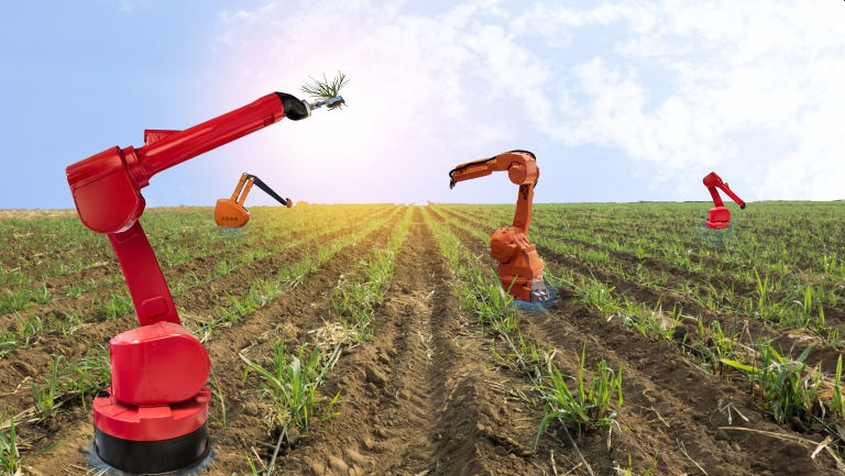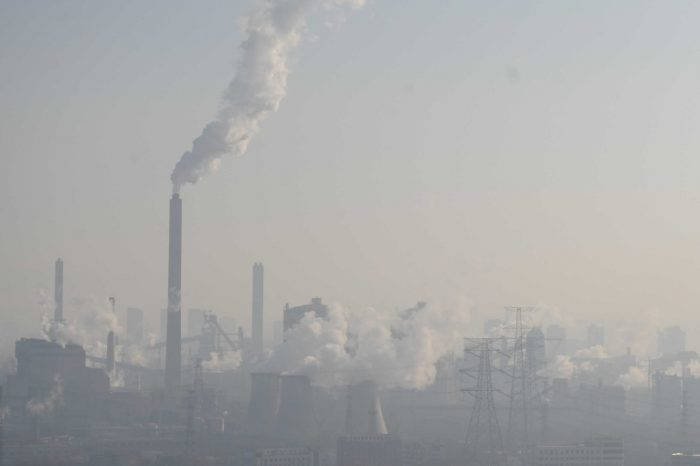How digital tools can help transform the farming system

The smooth functioning of the agriculture system these days is riddled with challenges: labor shortages, increasingly harmful environmental impacts, and the skyrocketing demand all force farmers to seek new ways of adapting to the changing needs. Although the use of technology in agriculture dates back to ancient times, now is the first time digital tools have taken the spotlight.
Digital transformation in agriculture is incredibly effective as it adapts some of the already existing tools to tackle farming problems. Robotic drones, tractors with computer vision units, and data analysis systems for forecasting have all migrated from various industries to facilitate the revamp of agriculture as we know it.
In this article, we’ll take a brief look at what the farming transformation is and how technology has changed agriculture, enabling farmers to provide sustenance for the ever-growing population of our planet.
What is farming transformation?
According to the Encyclopedia Britannica, the definition of agricultural technology specifies it to be “the application of techniques to control the growth and harvesting of animal and vegetable products.” However, in recent years, farming technology has gradually increased its focus on a more narrow, yet crucial sector of digital tools. Together, these new pieces of tech—from automatic robots working on fields to specialized software—are pushing the world towards the next agricultural revolution.
This digitalization of agriculture reflects the main course of the ongoing farming transformation. More pieces of machinery and vehicles are becoming autonomous, and as such, farmers have started incorporating robotic drones and utilizing computer vision, machine learning, and data science to optimize their activity and battle the most persistent agriculture challenges.
Statistics on the impact of IT in agriculture
The UN predicts that global population growth will have created a demand for 69% more food by 2050 than the farming industry is currently producing. To achieve this boost in productivity, farmers will have to trade manual work for automated machinery. Worldwide, the number of agricultural sensors alone is predicted to hit 12 million by 2023.
Autonomous agricultural revolution technology operates with more speed and precision than its human counterparts. For instance, drones used to spray fertilizer are assessed to perform their tasks 40 to 60% faster than human workers.
Digital farming also helps cut down operating costs significantly. Experts reveal that labor constitutes at least 50% of the expenses associated with farming. Although robotic technology is not yet at its peak, farmers in the future will be able to greatly reduce costs by utilizing autonomous machinery and management software.
How can smart farming technologies help feed the world?
The most significant challenges that farming faces in 2021 will come down to extreme shortages of workers, the inability to adjust the rate of crop production to the needs of Earth’s growing population, and the devastating impact of human activity on the environment. Employees also face new barriers to working efficiently due to the raging COVID-19 pandemic and worldwide lockdowns.
Under these conditions, modern technology in agriculture has three main vectors of improvement: automation of labor, better precision in tending to crops, and enabling more effective future-oriented management of farming systems.
Read on to learn how digital transformation helps farmers achieve these goals.
Robotic farming equipment
Robots in agriculture do everything from routine watering to harvesting, seeding, and monitoring the state of the plants. Advanced models also help fight the spread of weeds, diseases, and pests.
Autonomous tractors reduce the burden on human workers and simultaneously cut production costs for farmers. The main functions and features that land robotic equipment has include
- GPS, cameras, and computer vision software to navigate the field without a driver;
- route planning for each vehicle and monitoring the state and progress of the fleet from a single dashboard;
- generating and sending real-time updates, alerts, and reports, decreasing the amount of manual administrative work needed;
- improving the quality of food by identifying pests and diseases as soon as they appear, helping cut down the use of pesticides;
- enabling automatic irrigation with the precise control of how much water plants receive;
- instruments equipped with the Internet of Things (IoT) sensors can also measure the level of moisture and feed this data into a machine learning model to determine when the next watering is needed, all without human intervention.
Overall, robotic farming equipment makes it possible to maximize care for each separate plant, as opposed to the whole field. It makes farming more cost-effective, helps increase crop yields, and battles the deficiency of workers.
Drone bees
Drones for farming present a special instance of robotics in agriculture focused on increasing the adaptivity and resilience of the harvest. While aerial surveillance may seem insufficient when it comes to plants, drones actually bring many invaluable benefits to farmers.
The main advantage of smart drone bees is their ability to analyze the environment. These devices can detect changes in weather conditions, precipitation, temperature, and soil composition quickly. Therefore, when used for crop monitoring, drones can reduce expenses and improve yield by helping farmers react to spontaneous and uncontrollable events in time.
Drones are also effective for planting seeds, spraying and irrigating fields, and monitoring livestock.
Autonomous farming
A modern agriculture monitoring system still needs human employees to operate and maintain. As technology evolves, however, farming will welcome completely autonomous machines and infrastructures to optimize processes in the industry.
The main benefits of autonomous farming include the following:
- It eliminates the issue of labor shortages.
- It is a cost-effective solution that decreases the resources and funds spent on farming while boosting crop yields.
- It improves the quality of products by maximizing precision in tending to plants.
- It helps decrease the amount of greenhouse gas emissions and fertilizer used.
Data analytics and management
Another perk of smart farming is the possibility to take advantage of the enormous amounts of data the agriculture industry continues to incur: the yields of previous years, the current state of machinery, statistics on resource use—all this information can be pivotal in planning the activity of a farm and maximizing results.
To help farmers leverage big data and accomplish routine tasks, IT companies like Eastern Peak offer agriculture monitoring systems.
This kind of software binds to an IoT infrastructure, using sensors to monitor the condition of plants, livestock, and vehicles autonomously. Data management agriculture solutions are incredibly useful for the following objectives:
- employ preventive maintenance of machinery,
- forecast resource needs and demand,
- increase employee productivity,
- improve and simplify the control over the whole system,
- improve the quality of products, and
- cut down operating expenses.
Digital transformation in agriculture: a quick recap
Over the past decade, new technologies and methods in agriculture have triggered a digital revolution, transforming the whole industry of farming. Starting with drones helping farmers monitor crops, numerous autonomous tractors, irrigation systems, and various pieces of software are becoming a part of the transformation, boosting crop yields, reducing farming expenses, and improving employee productivity.
Today, Technology and agriculture are two tightly intertwined fields that propel each other’s innovation. As consumers’ tastes change and the demand for food grows, digital technology maintains its place as a cornerstone of flexibility in the agriculture industry.

About the author: Alexey Chalimov is the CEO and founder of Eastern Peak. He is also a technology evangelist at several technology companies. As a CEO at Eastern Peak, a strategy and technology consulting and development company, he ensures top quality and cost-effective services to our clients from all over the world.




